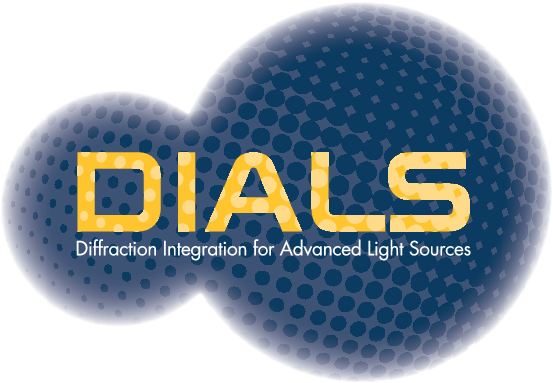Insulin tutorial¶
This tutorial uses test images which are available from the links below. Thanks to John Cowan for providing this test data!
There are two ways of running xia2 - with and without an input file, an example of which follows below. If you just run:
xia2 /my/data/are/here
xia2 will do something sensible - in this case process all of the data, scale all measurements as if they are from a single crystal and merge the data from each wavelength separately. If only one wavelength is present xia2 will assume that the data are a native data set - to separate anomalous pairs provide a heavy atom (at this time it doesn’t matter what it is…) i.e.:
xia2 atom=se /my/data/are/here
Other options are (type just xia2 to get this list):
Command-line options to xia2:
[pipeline=XXX] select processing pipeline, with XXX one of:
3d XDS, XSCALE
3dii XDS, XSCALE, using all images for autoindexing
dials DIALS
dials-aimless DIALS but scale with AIMLESS
[xinfo=foo.xinfo] or [/path/to/images]
[d_min=2.8] (say, applies to all sweeps)
[nproc=4] run on 4 processors (automatic)
[space_group=C2] (for example)
[unit_cell=50,50,50,90,90,90] (for example)
[reverse_phi=True]
[mosflm_beam_centre=x,y] (in mm, following the MOSFLM convention, applies to all sweeps)
[dials.fast_mode=True] for very fast processing
[atom=se] (say) - this is for xia2setup
[project=foo] (say) - this is for xia2setup
[crystal=bar] (say) - this is for xia2setup
Sensible command lines:
xia2 (pipeline=dials|3d|..) -xinfo foo.xinfo
xia2 project=foo crystal=bar (pipeline=dials|3d|..) /data/path
Running ths way some assumptions are made:
All images are from one crystal only.
The scan, if present, was the one used to select the wavelengths for data collection. If more than one is present, the alphabetically latest one will be used.
The sequence file, if present, should be in the one letter form and all comment lines should begin with a character not in A-Z. Again the alphabetically latest sequence file will be used.
If the sequence file is provided, and the atom is “se”, then xia2setup will assume that you are doing a SeMet experiment and will provide an appropriate number of atoms per monomer - though you will still have to uncomment this to include it, in case it has guessed wrong.
If you want to combine data from a number of crystals in the same .xinfo file, then you will need to copy out all text from
BEGIN CRYSTALtoEND CRYSTALfrom one .xinfo file to the other.
You should then load automatic.xinfo in your favourite editor, and check that the sequence looks correct and that the names are sensible as well as checking that the epoch numbers are set correctly and also that the wavelengths and beam centres are correct. If you provided a heavy atom there is a place to say how many to look for.
The other mechanism for running xia2 is via a xinfo file, which explains the layout of the data set to xia2 explicitly. This is helpful if you wish to only process a subset of the measurements, or want to process data for an RIP experiment. A simple example of xinfo file follows below, and more complex examples can be found here:
! This is a demonstration .xinfo file which illustrates how to cope
! with a simple case - this example is a native cubic insulin data
! set measured on 14.2 at the SRS
BEGIN PROJECT DEMONSTRATION
BEGIN CRYSTAL INSULIN
BEGIN AA_SEQUENCE
! this is only really needed at the moment for assessing the solvent
! content and number of residues in the asu
GIVEQCCASVCSLYQLENYCN
FVNQHLCGSHLVEALYLVCGERGFFYTPKA
END AA_SEQUENCE
BEGIN WAVELENGTH NATIVE
! this doesn't have to be here - if it is
! not included then the values from
! the image headers will be used - however
! if it is there then it should
! be correct!
WAVELENGTH 0.979000
! in here you can also have
! F' value
! F'' value
END WAVELENGTH NATIVE
BEGIN SWEEP NATIVE
WAVELENGTH NATIVE
IMAGE insulin_1_001.img
! you will probably need to change this -
! this is the only thing which
! you will need to change for the
! demonstration data set
DIRECTORY /media/data1/graeme/demo/
! additionally you can add the following
! information - if it is wrong in the headers
! BEAM x y (mm)
! DISTANCE z (mm)
! this describes the order in which
! the sweeps were collected -
! it usually comes from the image header
! if that information is in there
! EPOCH 5
! you can also add this to only reduce
! a subset of the data
! START_END 1 30 (image numbers)
END SWEEP
END CRYSTAL INSULIN
END PROJECT DEMONSTRATION



